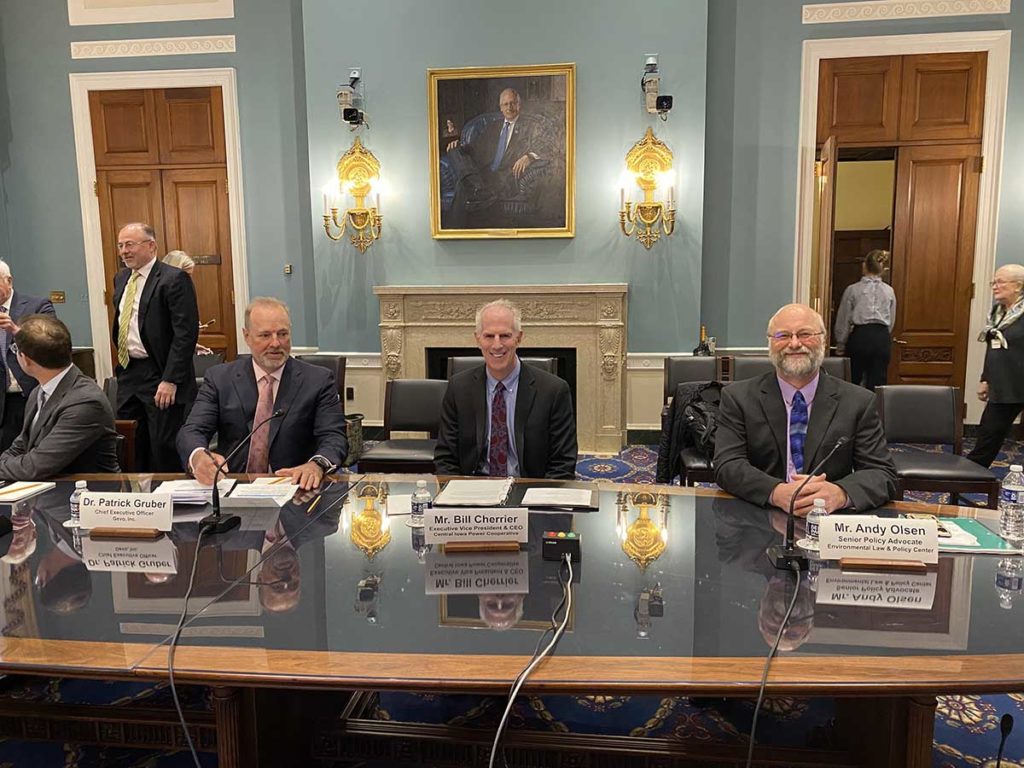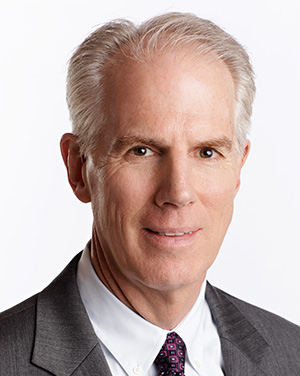
Electric cooperatives are increasing their investment in renewable energy, but baseload resources like coal and natural gas must continue to be part of the mix to ensure reliable, affordable power for rural America, the leader of Central Iowa Power Cooperative told a House panel Tuesday.

“As we look to the future, intermittent resources such as wind and solar must continue to be complemented and supported by always-available baseload energy resources like coal and natural gas,” Bill Cherrier, executive vice president and CEO of the generation and transmission co-op, testified before the House Agriculture Committee. “System reliability depends on the ability to blend intermittent sources like wind and solar with firm, flexible and dispatchable electric capacity.”
CIPCO, which serves nearly 300,000 residents and more than 13,000 commercial and industrial accounts, has a diverse portfolio that includes wind, solar, hydropower, landfill gas, natural gas, coal and purchases on the market.
“CIPCO’s generation portfolio has evolved significantly, with wind growing from 4.1% in 2010 to 29.9% in 2021 and coal dropping from 58.4% to 29.3% during that same time period,” Cherrier said at a hearing reviewing the 2018 farm bill’s impact on renewable energy opportunities in rural America.
Moving ahead, the co-op recently deployed the 100-megawatt Wapello Solar LLC and the 54-MW Independence Wind power purchase agreements. CIPCO is investing in an additional 100-MW solar project. At the same time, CIPCO recently invested $85 million in its existing Summit Lake generation plant, adding efficient reciprocating natural gas engines that serve peak electric demand, Cherrier said.
“This investment complements our intermittent wind and solar resources while ensuring the baseload generation necessary to meet the 24/7 power needs of Iowans and businesses in CIPCO’s service territory.”
As co-ops add more renewable energy, it’s “critical that policymakers work constructively with industry to achieve these objectives while maintaining the exceptional reliability and affordability that American families and businesses expect and deserve,” Cherrier said.
He urged Congress to approve direct federal payments to co-ops to put them on a more equal footing with for-profit utilities, which have long received tax incentives to invest in renewable energy projects. Co-ops cannot access those incentives because they do not pay federal income taxes.
“The federal tax-credit structure prevents not-for-profit electric cooperatives like CIPCO from taking advantage of the tax benefit to directly build and own wind and solar generation assets,” Cherrier testified. “For cooperatives to reap any benefit for this transition, we must work with third parties that develop and own these assets.
“Direct-pay tax incentives would level the playing field for all electric providers, allowing co-op-member systems and member-owners down the line to have equal access to a diverse power supply mix.”
Congress could also boost rural America’s economy by passing legislation to allow electric cooperatives to refinance federal Rural Utilities Service loans at lower interest rates without penalty, he said.
NRECA and its member co-ops are calling on lawmakers to approve the Flexible Financing for Rural America Act, which permits co-ops to refinance their RUS electric loans without facing costly prepayment penalties. An average co-op with typical RUS debt could save $2 million per year in interest payments at today’s interest rates.
“This essential step will give co-ops the flexibility to best manage their financial circumstances while focusing on cooperatives’ long-term stability and that of the communities they serve,” Cherrier said.
Erin Kelly is a staff writer for NRECA.